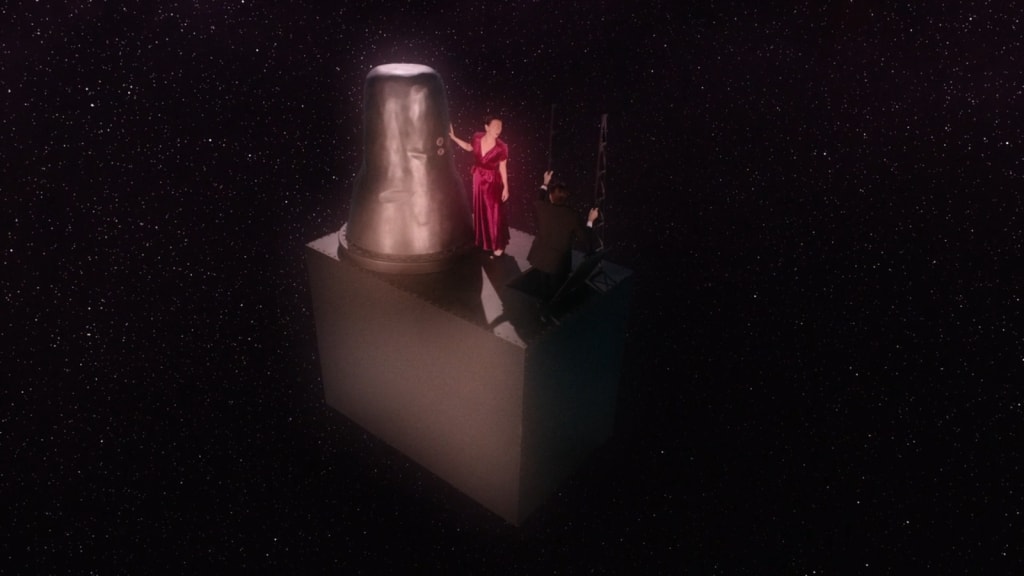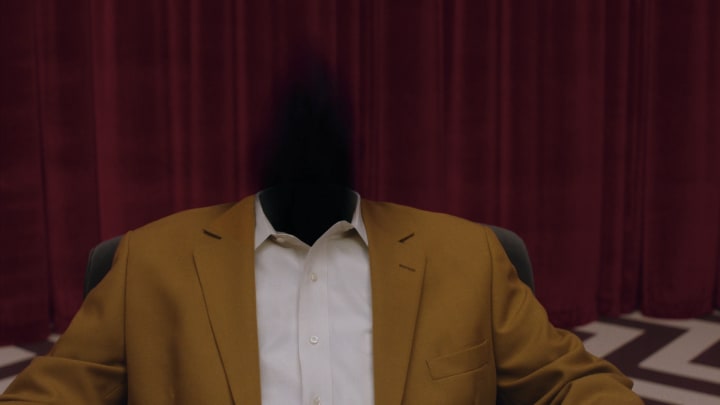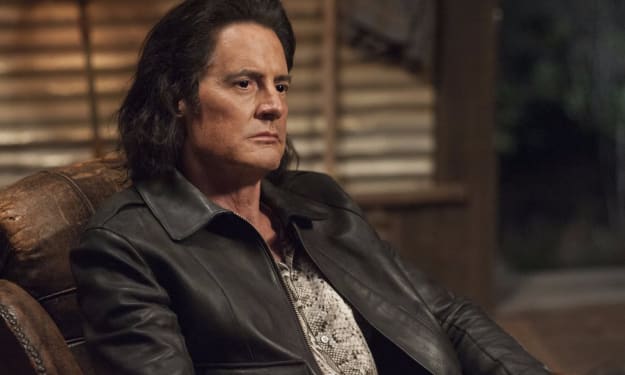Twin Peaks 2017: The Magic of Twin Peaks Special Effects
An in depth look at how digital effects have been vital to expanding its scope and vision.

"The storytelling remains the same, but the tools for doing it have changed. The first two seasons were shot on film. This time we shot digitally. So I used all the available technical means possible to bring my ideas to life."
David Lynch, in an interview with festival-cannes.com (written by Benoit Pavan)
The above quote is a revealing insight into something I'd touched on in a previous article, that the new expanded vision for Twin Peaks has been in part only possible due to the advances in digital film-making. Digital film-making has been a revolution for film and TV production for a number of reasons; the equipment is cheaper and more lightweight compared to film cameras, simplifying much of the shooting, especially on location, and limits on the amount of footage you can shoot, previously dictated by the volume of film you had, have practically gone out the window; you're only restricted by the number of SD cards you can carry, and the material can be endlessly copied without a loss in quality. Unlike film, raw footage can be viewed almost immediately (as opposed to waiting for a post-house to process it), and less complex set-ups also make improvisation and re-shoots easier and cheaper. Perhaps most importantly, editing and special effects have become a streamlined, complimentary process; modern software allows editors to create complex FX and add them seamlessly to each scene as they go.
"Digital is lightweight, much faster, no dirt, no scratches, no tearing, and there is so much control in post-production. It is a beautiful thing."
David Lynch, speaking at the Lucca Film Festival, 2014
Lynch and his editor Dwayne Dunham (who also edited the original series) have used these advancements to full affect, and this has perhaps been nowhere more evident than the bravura opening 25 minutes of Part 3, which portrays Cooper's journey from the Black Lodge back to reality; with only minimal use of sets, the majority of this sequence is given life by CGI and other editing techniques. Key among them is digital matting, which allows you to convincingly put characters into almost any place or situation; traditional print matting involved layering up to five strips of film accurately onto one single piece, with errors resulting in visible seams, whereas digital matting can be done precisely down to a single pixel. Lynch, ever playful, manipulates the process somewhat; he uses it to place Coop in all kinds of dimensions, but deliberately blurs the seams at times, only adding to Coop's the sense of displacement.

"You can go out now."
The way Lynch uses digital matting seems emblematic of his attitude to special effects overall in Twin Peaks; they aren't supposed to look 'realistic' as such, but in fact are designed to enhance the unreality of it. During the above sequence, Lynch isn't trying to covey something that you'd actually witness, it probably isn't even taking place on a physical plane of existence; so why should it, or even how could it, look 'realistic'? The off-kilter looking super-imposition combined with other more intricate set details and noir-ish lighting and shadow strike a balance to create a mood that is truly uncanny.
Essential to this is Digital Intermediate, a film finishing process that involves colour grading; previously an intermediate was made by exposing the film to the original negative, and varying the amount of red, blue and green light the intermediate is exposed to, with great skill required to predict the correct amount of exposure time. Now digital tools give editors the freedom to fine tune colour on a scene-to-scene basis, enabling Lynch to create different colour-based moods and feelings wherever he requires. This not only allows for distinct atmospheres to compliment different elements of this expanded new world of Twin Peaks, but for me changes some of my perspective on them too.

"This feels...weird".
During the original two seasons, the Red Room scenes had a very distinctive feel; the repeating simple themes (velvet curtains, zig-zag patterned floors), heavy shadow and distorted sense of time and physics all evoke dreams. This dimension first appeared to viewers in a dream of Cooper's and virtually all his interactions with it (accept arguably in the finale) could have plausibly been dreams or hallucinations. But from the very off in Twin Peaks: The Return, the Red Room has a different vibe; the obtuse non-sequiter speech has largely been toned down, replaced with more narrative-driving dialogue, and other characters beyond Coop (such as Hawk) can actually see the dimensions imprint on our world. But most importantly, it has changed visually; the colours are saturated and more vivid, and thanks to some excellent CGI, the physics are more mind-bending yet somehow more tangible than ever.
To me Lynch and Frost have brilliantly used an array of modern film-making techniques to make their boldest statement about the wild world of Twin Peaks yet - that the Red Room is not a place inside minds or dreams, but a dimension just at the edge of our world, our perception, that defies all known rules of reality. And there is only one word I can use to describe that place - magical.
About the Creator
James Giles
Writer, confessed geek and pop culture enthusiast, loves film, TV and video games. Blogged and written for various websites on all the above.






Comments
There are no comments for this story
Be the first to respond and start the conversation.